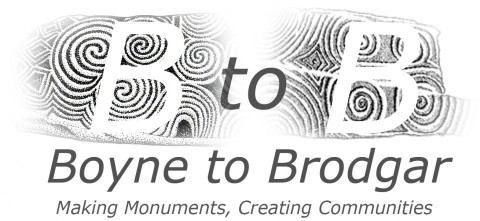This theme underpins and is inextricably entwined with all the other research themes, since the questions of ‘who?’, ‘how?’ and ‘why?’ constitute fundamental building blocks for our understanding of Neolithic monumentality. Specific questions include the following:
- Were the funerary monuments used for all members of the community, or only certain individuals (and if the latter, then how were the other dead of the community treated)? Over how many generations were they used? What can we discover about the people whose remains are found in them? (This touches on issues of demography, palaeopathology, diet and mobility, for example.)
- Where did the builders and users of the monuments live, and what was their lifestyle? How does the location of settlements relate to the location of monuments? Was there a deliberate creation or imagining of sacred landscapes?
- What was the physical environment within which monuments were constructed and used? And how can we account for the paradox whereby a significant downturn in palaeoenvironmentally-detectible signs of agriculture during the second half of the fourth millennium (Whitehouse et al. 2014) seems to coincide with the peak period of passage tomb construction? Is there any evidence for a link between climate change (i.e. a shift to cooler and wetter conditions) at that time and monument building, as some have claimed – and if so, what was the nature of that connection? Whitehouse et al. caution against adopting simplistic, deterministic models.
- How were the various kinds of monument used, and how do they relate to notions of identity, cosmology and power? Is the development of the largest and most elaborate passage tombs the outcome of a strategy of competitive conspicuous consumption, as has been argued? How was society organised in different regions and at different times during the Neolithic, and how do the monuments reflect or express this?
The questions outlined above cover a wide range of topics, but they do not claim to be exhaustive; for instance, additional questions could be posed about the adequacy and relevance of our existing categorisation of monuments. For example, where – chronologically and in terms of traditions of practice – do ‘anomalous’ monuments such as Ballynoe, Co. Down, lie? And where do we draw the line in our definition of monuments in the first place? Should Early Neolithic causewayed enclosures be included, if large Late Neolithic timber enclosures are? What about natural places that were treated as monuments, in terms of being the loci for ceremonies and depositions? No doubt all these matters will be discussed at length over the intended lifetime of the Boyne to Brodgar initiative.

